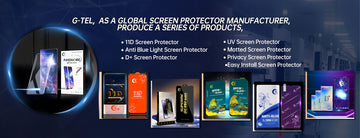The Ultimate Guide to Screen Protectors: Keep Your Phone Safe, Private, and Clear
The Ultimate Guide to Screen Protectors: Keep Your Phone Safe, Private, and Clear
In today's fast-paced digital world, your phone is more than just a communication device. It’s your bank, your work hub, your personal diary, and entertainment center all rolled into one. With all this sensitive information stored at your fingertips, protecting your phone’s screen has never been more important. Whether you're looking for a privacy screen protector, a tempered glass screen protector, or even a matte screen protector, we’ve got you covered. Here’s everything you need to know about choosing the right screen protector for your phone and maintaining it.
1. Why You Need a Good Screen Protector
Your phone’s screen is its most vulnerable part. A cracked or scratched screen can be costly to repair, and let’s face it—it's hard to enjoy using a phone with a damaged display. That’s where screen protectors come in. From plastic screen protectors to tempered glass screen protectors, these thin layers of defense act as a barrier between your phone and the harsh realities of everyday life.
But screen protectors are not just about keeping your screen safe from scratches. If you’re a privacy-conscious user, a privacy screen protector is a must. It ensures that no one can glance at your phone and steal your personal information. Plus, it keeps your screen smudge-free and easy to read in bright light.
2. Choosing the Right Screen Protector
With so many options available, how do you choose the best phone screen protector for your device? Let’s break it down.
For Privacy: The Privacy Screen Protector
If you’re constantly using your phone in public places, a privacy screen is a game-changer. A privacy screen protector works by narrowing the viewing angle of your screen, ensuring that only you can see the content clearly when looking directly at it. No more worrying about prying eyes on the subway or in crowded cafes. If you're using an iPhone 13 screen size or iPhone 12 screen size, you’ll find privacy screen protectors tailored to fit these models perfectly, blocking visibility from anyone sitting next to you.
For even more privacy, there are privacy screen protectors specifically designed for iPhone 14 and iPhone 14 Pro, offering superior protection without sacrificing screen clarity.
For Durability: The Tempered Glass Screen Protector
Tempered glass screen protectors are the gold standard for durability. If you're looking for something that can withstand drops, scratches, and bumps, tempered glass is the way to go. Whether you’re using an iPhone 12 screen protector or an iPhone 13 screen protector, tempered glass will offer robust protection without compromising touch sensitivity or display clarity. It’s the ideal choice for anyone who values durability above all else.
One of the newest innovations in screen protection is the UV glue screen protector for the iPhone 15. This technology uses UV light to bond the protector directly to the screen, providing a seamless, bubble-free installation. It’s perfect for those who want the most secure fit and the best protection possible.
For a Paper-Like Experience: The Paperlike Screen Protector
If you’re an artist, writer, or note-taker, you may prefer a paperlike screen protector. This type of protector offers a textured surface that mimics the feel of writing on paper, making it perfect for iPads and phones when using a stylus. It also helps to reduce fingerprints and glare, making it easier to work in bright environments.
For Anti-Glare and Anti-Spy Protection
Are you always battling glare or trying to protect your screen from prying eyes? If so, look for matte screen protectors or anti-glare screen protectors. These types of protectors reduce reflections, improve visibility in bright light, and provide a smooth, matte finish that resists fingerprints.
But anti-glare is not the same as anti-spy. Anti-spy screen protectors are designed to keep your information private by limiting the viewing angle of your screen, much like privacy screen protectors. So, if you’re looking for more privacy, be sure to choose a privacy screen protector rather than just a regular anti-glare one.
3. When to Replace Your Screen Protector
Over time, your screen protector will experience wear and tear. Cracks, scratches, and peeling edges are signs that it’s time to replace your screen protector. But how do you know when it’s time for a new one? Here are a few signs:
- The protector has visible cracks or chips.
- You notice a significant loss in touch sensitivity or responsiveness.
- The edges are peeling off.
- It no longer provides the same level of privacy or clarity.
If any of these apply to your current protector, it's time to replace it with a new screen protector—preferably one that suits your needs, whether it's privacy, matte, or tempered glass.
4. How to Remove a Screen Protector
Sometimes, you’ll need to remove a screen protector to replace it with a new one. Whether you're swapping an old privacy screen protector or tempered glass protector, here's how to do it safely:
- Start from the edges: Use your fingernail or a plastic card to lift a corner of the protector.
- Peel slowly: Gently peel the protector off. If it’s stubborn, you can use a bit of heat from a hair dryer to loosen the adhesive.
- Clean your screen: After removal, wipe down your phone screen with a microfiber cloth and some cleaning solution to remove any leftover adhesive or smudges.
5. Best Privacy Screen Protector for Your Phone
When it comes to privacy screen protectors, not all are created equal. The best privacy screen protector will offer a wide viewing angle range (around 30-45 degrees) to ensure your information stays private. Whether you’re using an iPhone 13 screen protector, iPhone 12 screen protector, or iPhone 14 screen protector, be sure to select a high-quality one that won’t interfere with your phone’s touch responsiveness or camera functionality.
6. Does Privacy Screen Protector Affect Front Camera Quality?
One common concern with privacy screen protectors is whether they impact front camera quality. The good news is that most high-quality privacy screen protectors are designed not to interfere with Face ID or selfies. As long as you choose a well-made protector that’s properly aligned with your phone’s front camera, you should have no issues with Face ID or camera performance.
Conclusion
No matter what type of screen protector you choose, it's an essential accessory for anyone who wants to keep their phone safe, private, and functional. Whether you're using an iPhone 12, iPhone 13, iPhone 14, or iPhone 15, you’ll find a screen protector that fits your needs, whether it’s a privacy screen protector, tempered glass, or matte protector. Remember to replace your screen protector when it starts to show signs of wear, and always remove it carefully to avoid damaging your phone’s screen.
Protect your phone today, and enjoy peace of mind knowing your screen is safe from scratches, privacy breaches, and annoying glare!


